Himalayan Walkers best four tour package offers a unique travel package catering to diverse interests. Experience breathtaking natural beauty, spiritual reflection, historical sites, and wildlife encounters in Kathmandu, Chitwan, Pokhara, and Lumbini. Immerse in cultural diversity, explore jungle safaris, admire lakes, and visit the birthplace of Buddha for a complete and special journey.
Trip Highlight
- Holy shrine of Lumbini where Buddha was born, explore various interesting aspects related to Budhha and his childhood.
- Explorative visit through major UNESCO world heritage sites of Kathmandu valley.
- Jungle safari and many other natural as well as indigenous activities in Sauraha, Chitwan.
- Memorable and amazing natural city of Pokhara and its jaw dropping surrounding.
- World’s best sunrise viewpoint, Sarangkot.
We have created a unique travel package that caters to all the different interests a traveler may have. Our goal is to provide our customers with a diverse range of experiences, including:
- A breathtaking natural location that will leave visitors in awe.
- A spiritual destination where visitors can find inner peace and reflection.
- Historical and cultural sites that offer insights in to local people, their customs and their history across different time periods.
- Opportunities for observing and engaging with wildlife.
The four different tourist spots have been incorporated to make it complete as special travel package:
Kathmandu, Chitwan, Pokhara, Lumbini.
Kathmandu is a city that lies at the heart of a long-lasting civilization, showcasing a rich history and cultural diversity. The Kathmandu valley is renowned for its UNESCO World Heritage Sites, which consist of seven groups of monuments and buildings. These sites provide evidence of the artistic and historic achievements of the Kathmandu valley, highlighting the reasons for its global fame.
Chitwan Sauraha, located near the Rapti River and Chitwan National Park, is a village that serves as the entry point to the park for jungle safaris. It has become a popular tourist destination in Nepal, particularly for observing a variety of wild animals and birds. Visitors to Sauraha can engage in various activities for entertainment, such as riding elephants or vehicles to explore the natural forest of Chitwan National Park. Popular tourist activities in Sauraha include jungle walks, elephant rides, jungle safaris, canoeing, attending the tharu culture program, and viewing the sunrise and sunset.
Pokhara, Pokhara valley, known as the city of lakes, the most popular tourist destination in Nepal with its pristine natural beauty and man-made attractions. The proximity of the Himalayas to the north, a popular hill station called Sarangkot, and many lakes within the valley make it an inspiring destination. The breathtaking scenery has been praised by many travel writers, and it is often referred to as the "jewel of the Himalayas" due to its pristine air, snow-capped Annapurna peaks in the background, and tranquil Phewa, Begnas, and Rupa lakes.
Not only are its natural and man-made structures attractive, but it also offers various adventurous activities like paragliding, zip flyer, mountain biking, bunjee jumping etc.
Lumbini, a center of spirituality where Buddha was born, is one of the four main pilgrimage sites in Buddhism. The place has most important monument called ‘Ashok Pillar’ which is standing there since 3rd Century B.C. & number of older temples, including the Mayadevi Temple, various new temples and the image (nativity sculpture) depicting his birth inside. The eternal World Peace Flame is a major attraction of the Lumbini located at the center of the garden. We will observe the flame kept glowing uninterrupted 24 hours a day. The flame represents peace in the world and celebrates the International Peace Year. Another important spot close to Lumbini is Tilaurakot, the capital of Shakya Kingdom extends over an area of two and a half miles. The Kingdom of Buddha’s father located in Kaspilvastu near Lumbini where Siddhartha Gautam spent his first 29 years as a prince. The site of ancient Kapilvastu due to its general accordance with local bearings and geographical conditions as described in the Buddhist texts. The site sits in a peaceful meadow on the banks of the Banganga River.
Besides the religious and historical significance, the Lumbini sightseeing tour offers cultural insights into the village life of southern Nepal. The Buddhist pilgrimage tour of Nepal unveils how Buddhism was preserved and Buddhist philosophy was developed since the time of Buddha.
Show more...Places Visited:
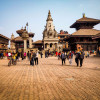
Kathmandu
kathmandu, Nepal
Activities:
Arriving in Kathmandu by flight is an unforgettable experience due to the stunning views of the Himalayan mountain range. Your flight will land at Tribhuwan International Airport (TIA), which is located at an altitude of 1350m. Upon arrival, you can obtain your Nepal entry visa either in advance or upon arrival at TIA, and it may take up to 45 minutes to process the visa depending on the queue. For more information about obtaining the Nepal entry visa, please refer to the official website of the Department of Immigration Nepal. Once you exit the airport gate, you will be greeted by a representative of our company who will be holding a placard with our company's name and logo. Our representative will offer you a holy Tibetan scarf as a welcoming gesture and take you to your hotel in a private vehicle. The journey from TIA to Thamel, where the hotel is located, takes approximately 30 minutes. Along the way, you will see the city's sights, such as the Pashupatinath Hindu temple, bustling with various vehicles and people, which will make your journey more enjoyable and fascinating. Upon reaching the hotel, you can rest and freshen up. Later in a while our representative will brief you regarding your trip plan further. Thamel is a lively area with plenty of restaurants, shopping centers, and good accommodations. Later on, we will provide a trip briefing and invite you to a welcome dinner. You will spend the night at the hotel.
Show more...Places Visited:
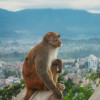
Swayambhunath
kathmandu, Nepal
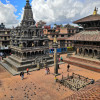
Patan Durbar Square
kathmandu
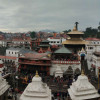
Pashupatinath
kathmandu
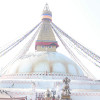
Bouddha Stupa
kathmandu
Activities:
Kathmandu guided city tour includes four major UNESCO world heritage sites in Kathmandu valley, major civilizational attractions. These four sites give you wonderful insights to various aspects of different religious/spiritual/historical segments of Nepalese society in both past and present. Swoyambhunath tells you the story of how present day Kathmandu valley, then Nag Daha (Snake Lake), was converted in to wonderful place of human settlement from Himalayan Buddhist’s perspective. Patan Durbar square is a reflection of magnificent arts and architecture that existed in and around the valley in the recent and distant past. Pashupatinath temple narrates you the tale of Sanatan dharma (understood as present day Hinduism) in Kathmandu valley as to how it originated and evolved throughout various time periods. It also illustrates how this site is profoundly linked to all Hindus worldwide. Bouddha Stupa represents another facet of Himalayan Buddhism and its evolution throughout the history and also gives you a clear picture of how Tibet and Nepal are deeply connected through this site.
Swoyambhunath
-holiest Buddhist stupas in Nepal
-World Heritage Sites
-Literally meaning "self- created"
-Praised and meditated by many Buddhas: Shikhi, krakuchhand, kanakmuni, Shakyamuni, Manjushri
-Excellent view of the Kathmandu valley The distance is about 3.9km from Thamel takes around 15min in private vehicles.
Swayambhunath has been listed in the World Heritage Sites. The entire valley was an enormous lake, nagdah, out of which grew a lotus with five colored flame (self-arisen). Lotus was transformed into a hill and the flower became the stupa. It is still believed that the self-arisen flame is covered with dome of Stupa. The place is known as Swayambhu, meaning "Self-Created" over which a stupa was later built. Swayambhu is among the oldest religious sites in Nepal known as 'monkey temple' because of the large tribe of roaming monkeys. Located at one of the highest elevations in Kathmandu Valley gives panoramic views of the city. The place is praised by Buddha and meditated by several Buddha's as a pure holy site. We'll see three enormous shining golden statues of Sakyamuni Buddha, a four-armed Chenresig and Guru Rinpoche, built-in 2003. The site has two access points: a long staircase contains 365 steps leading directly to the main platform of the temple and vehicle road around the hill from the south leading to the south-west entrance. The first sight on reaching the top of the stairway is the enormous Vajra. The first earthly element facing the stupa on left is a small building contains one of the five elements placed in cardinal points around Swayambhunath. There are many small shrines with statues of Tantric and shamanistic deities, prayer wheels for the Tibetan Buddhists. The stupa represents Buddha’s mind. It offers peace, freedom, and joy and ultimately helps to obtain perfect enlightenment. Huge prayer wheels and fine Buddhist paintings are displayed in the monasteries, as well as the largest Buddha statue in the country. The stupa consists of a dome at the base; above the dome, there is a cubic structure with the eyes of Buddha looking out over the valley. The stupa has stood as a hallmark of faith and harmony for centuries with Hindu temples and deities incorporated in this Buddhist site. Visitors walk around the stupa and recite mantras, make offerings, turn prayer-wheels and make wishes for the benefit of all beings. Near the stupa left at the corner is a small red brick building has Swayambhu Buddhist museum. There is a collection of Buddhist statues and items. Hariti Temple (Ajima Temple) is a two-tiered gilded Newari style temple. Harati is the Buddhist goddess for the protection of children against infectious diseases, protectress deity of Swayambhu, and the deity of wealth.
Patan Durbar Square, City of fine arts.
-Golden Temple
-Mahabuddha
Patan Durbar Square is one of the three major medieval cities in Kathmandu and a destination of fine arts has hundreds of fascinating Hindu and Buddhist monuments scattered in and around. Patan City is an enchanting mixture of palace buildings, artistic courtyards, and former palace complex. Most of the monuments are back to the medieval Malla period 15th to 17th century as the golden period of Nepalese art and architecture. Krishna Mandir- a stone temple of Lord Krishna with its 21 spires and bas-relief art depicting scenes from the Mahabharata and Ramayana epics. In addition to this, the main highlights are the Golden temple, Rudravarna Mahabihar and Patan mahabuddha, an exemplary Buddhist monumental sites in Patan. The background, story and history of these sites will amaze you while witnessing a living history. The stories behind the development of different segment in Buddhism, Bajrayan, which is a typical Newari Buddhist practice in Kathmandu valley. Patan is also the center of wooden and metal artifacts.
Pashupatinath Temple, most sacred Hindu temple, famous for the shrine of lord shiva, two-storied pagoda temple.
Pashupatinath Temple is one of the most sacred Hindu temples of Nepal located at the banks of holy Bagmati River. Every year this temple attracts hundreds of elderly followers of Hinduism. The place for different festival like Maha Shivaratri and Teej where thousands of devotees celebrate. The temple is the ultimate pilgrimage for Hindus throughout the world. The area is swarmed in by the Hindus from different part of the country. The two-storied pagoda temple of Pashupathinath houses the five-faced statue of Lord Shiva. Apart from the main shrine, there are numerous temples dedicated to different god and goddess in and around the Pashupatinath temple area. This temple is an important destination for art historians. It displays a variety of temple design some of which are Dome style, Pagoda style, Shikhara style and so on. Additionally, there are varieties of statues and sculptures around the complex. There are statues made of stone, metal, and wood. The door and pillars around the temple area are carved in beautiful shapes of God and griffins. The temple is built in the pagoda style of architecture, with cubic constructions and carved wooden rafters on which they rest, and two-level roofs made of copper and gold. After we continue to Boudhanath Stupa which is 2.3km from here takes around 15min to reach.
Boudha Stupa, The largest stupa in the world.
- Most sacred Tibetan Buddhist site
- The ancient trade route from Tibet
-The woman built the stupa and was completed by her four sons - Stupa contains a relic of Kashyap Buddha On the rooftop restaurant and enjoy the calm and peaceful ambience with a cup of coffee.
Boudha stupa is the largest and most sacred Tibetan Buddhist site outside of Tibet forming a religion and culture hub for the Tibetan and people from the Himalayas of Nepal. The Stupa was on the ancient trade route from Tibet. The Stupa is claimed to have the relic of Kasyapa Buddha, the third Buddha of the Bhadrakalpa. Boudha Stupa, a UNESCO World Heritage Site significant for its historic and architectural significance, with sprouting monasteries and craftsmanship. It is said that the stupa is built by the mother Jyajhima, a poultry woman. She was very poor despite her poverty she had an intense desire for building a stupa. The mother passed away after she completed up to the vase, the dome-like structure. She had four sons, and the construction of the rest of the Stupa was completed by four sons. After they finished it, they all stood up in front of it and made prayers. Everyone made their wishes. When they were praying, all the buddhas and bodhisattvas were absorbed into the stupa, which is why the name of the stupa is also “All-Encompassing.” The stupa is a semicircular white dome and the towering spire, with unblinking eyes painted on each side that stares into the four directions. The overall shape represents a Buddhist mandala (a cosmological map) and the path towards enlightenment, as well as the mythical center of the cosmos, Mount Meru. The four Dhyani Buddha signifies the crucial points, and the fifth, Vairocana is enshrined in the central white hemisphere of the stupa. The base of the stupa consists of three large platforms, decreasing in size. The square tower is topped by a pyramid with 13 steps, represents the stages that human beings must pass through to achieve nirvana. The triangular shape is the abstract for the elements of fire. Every portion has a symbolic significance: the base, dome, spire, and pinnacle represent the five elements. It is said that the stupa contains a piece of bone from the skeleton of Siddhartha Gautama, the historical Buddha. There are 108 images of Dhyani Buddha at the base of the stupa, accompanied by prayer wheels organized in a group of four or five in 147 different niches. The prayer flags tied on the stupa are believed to carry mantras and prayers towards heaven. The place is quiet and peaceful to find some spiritual connection with this place. Moreover, the sound of singing bowls and Buddhist chants, mixed with the smell of incense burning creates a kind of healing energy. The place allows visitors to delve into the lives of Buddhist monks and nuns who devote their lives to simplicity and non-violence. Boudhanath is the best place to learn about spirituality, meditation and the history of Buddhist philosophy, there is no other place like Boudhanath to visit. Early in the morning and evening time, Buddhist monks in maroon robes are seen circumambulating the stupa with prayer wheels on their hands. Small peripheral of the stupa is surrounded by the Thanka and rituals objects shop. The spot is favorable to explore both the culture and architectural sites. Numerous small stupas are located at the base.
Show more...Places Visited:
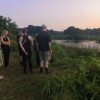
Sauraha
Chitwan, Nepal
Activities:
After the breakfast, our driver will pick you up from you hotel for Chitwan. Traveling on the highway alongside the Trisuli River would be a breathtaking experience, as you can observe the lush green hills on either side of the river. As you make your way to Chitwan, you'll encounter various confluences of Trisuli river tributaries. The roadside villages provide an opportunity to catch a glimpse of hill area village life. Upon your arrival at Chitwan, the hotel representative will welcome you and provide you with a complete itinerary of all the activities that you will be participating in during your stay. These activities will comprise visiting Tharu village and the park visitor center, enjoying lunch, witnessing the sunset view from Rapti River, savoring dinner, and enjoying a cultural program. You will spend the night at the hotel in Chitwan.
Show more...Places Visited:

Sauraha
Chitwan, Nepal
Activities:
The upcoming day will be jam-packed with an array of activities, some of which will take place in the jungle and others that will not. This means that you will have the opportunity to both enjoy yourself and expand your knowledge by experiencing new things. The activities for the day in Chitwan include going on a canoe ride or a jungle walk, as well as visiting the elephant breeding center. After lunch, you will embark on an elephant safari and enjoy some evening entertainment. You will then spend the night at the hotel in Chitwan
Show more...Places Visited:
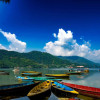
Pokhara
Kaski, Nepal
Activities:
Following breakfast, depart from Chitwan and head towards Pokhara, which is often referred to as "The Lake City" due to its numerous lakes. Initially, the road passes through subtropical forests and lush vegetation in Chitwan. However, as you leave Chitwan behind, the landscape gradually transforms. You will notice hills, small settlements, and terraced farms along the way. Upon reaching Pokhara, which is a breathtakingly beautiful city, you will be greeted with spectacular views of the Himalayas, including Dhaulagiri (8,167m), Manaslu (8,156m), Machhapuchhre (6,993m), the five peaks of Annapurna, and other majestic peaks. After checking in at the hotel, you can take some rest and leisurely stroll through the streets around Fewa Lake to appreciate the city's magnificence. You will spend the night in Pokhara.
Show more...Places Visited:

Pokhara
Kaski, Nepal
Activities:
Pokhara is widely recognized as a tourist's paradise in every sense, as it is located in a truly Himalayan country. Every year, tourists from all over the world visit this incredibly beautiful place. It is also recognized as the gateway to Annapurna circuit, which is a famous trekking trail in the Himalayas. Today, we wake up early in the morning in this stunning city and head towards Sarangkot, a well-known hill station that offers breathtaking views of the mountain range to the north and an incredible sunrise view. After enjoying the sunrise view, we return to the hotel for breakfast. Following breakfast, our tour continues as we set out to visit and explore the most popular tourist destinations in Pokhara. Major tourist attractions in Pokhara includes: Bindhabasini Temple: Lies in the center of the religious old bazaar. It is dedicated to Goddess Bhagwati, yet another manifestation of Shakti. The park grounds offer a fine picnic and relaxing area. Davis falls: Locally known as Patale Chango and in the southern flank of the Pokhara valley is where the stream flowing from Fewa Lake collapses and surges down the rock into a deep gorge, leaping through several potholes. Gupteshwor Cave: The revered Gupteshwor Cave is situated 2 km from Pokhara airport. The entrance is right across from Devi’s fall and the cave is almost 3 km long. It has some big hall-sized rooms and some passages where you have to crawl on all four. Phewa Lake and Barahi Temple: Situated at an altitude of 800m above sea level, it is the second-largest lake in the kingdom. With the Barahi Island Temple in the middle of the lake, it is the most important religious monument in Pokhara. Seti River Gorges: Carved by Seti-Gandaki is one of the natural wonders of Pokhara. K.I. Singh bridge at Bagar, Mahendrapool & Prithivi Highway Bridge near bus park, provides a perfect view of the river’s dreadful rush and the deep gorge made by the turbulent flow of white water. Besides, Pokhara is also a hub for adventurous activities like: paragliding, bunji jumping, ultra-light, zip flyer etc. If you would like to indulge in any of the adventurous activities, you might think of extra stay in Pokhara.
Show more...Places Visited:
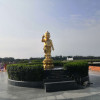
Lumbini
Rupendehi, Western Nepal
Activities:
Following breakfast, we will begin our journey for today from Pokhara to Lumbini. Today’s travelling through a hilly region will be an exhilarating and scenic experience. The winding roads twisting and turning through the undulating green hills taking you on a journey of breathtaking beauty. The hills rise up on either side of the road on the bank of aandhi khola will create a sense of enclosure and intimacy with nature. The scenery changes with every turn, from rocky outcrops to cascading waterfalls to dense forests. The sunlight filters through the leaves, dappling the road ahead with patches of light and shadow. Passing through such a wonderful scenery we will reach again to the plains of Nepalese territory but on western part. The Butwal, the city spreading from north to south and widely connecting hills to terai (plain) is a major city in western part of Nepal. We will pass the city behind and continue forward to reach the land of Gautam Buddha, Lumbini. Overnight stay will be with the luxury of local hotel in Lumbini.
Show more...Places Visited:

Lumbini
Rupendehi, Western Nepal
Activities:
Lumbini Buddhist pilgrimage sites - UNESCO World Heritage Sites - Perform chanting and meditation - Asoka pillar, Holy pond, Maya Devi temple - Birthplace of Gautam Buddha "Light of the Asia" - The holy pond where Maya Devi took the ritual dip and where he had his first bath Lumbini is one of the four main pilgrimage sites in Buddhism and an important place for those Hindus who consider Buddha one of the many manifestations of the god Vishnu. The place is also defined as a UNESCO World Heritage Site. The holy site of Lumbini runs ancient monasteries, a sacred Bodhi tree, an ancient bathing pond, the Ashoka pillar, and the Mayadevi temple. Maya Devi Temple is the most important Buddhist temple in Nepal considered as the birthplace of Gautam Buddha "Light of Asia". Visitors will perform chanting and meditation at this site. The birthplace of Buddha has number of older temples, including the Mayadevi Temple, and various new temples, founded by Buddhist organizations. There is an image depicting his birth inside. The current whitewashed temple was built to protect the older temple under it. There’s a small area looking down into the dugout areas where Buddha was born. There’s a small glass panel with some faded painting. Several monuments, monasteries, museums, and the Lumbini International Research Institute are also located in this holy site. We will visit the Holy Pond beside the temple, where Maya Devi took the ritual dip prior to his birth and where he had his first bath. Buddha was born while Maya Devi was traveling to her father's kingdom to give birth. It is said that she gave birth painlessly when the Buddha was born he immediately spoke and then took seven steps north and a lotus flower sprang forth with each step. Most of the Buddha's miracles are seen in Buddhism as being the result of extraordinary supernatural abilities gained through advanced meditation, rather than miraculous powers. Many of the Buddha's followers, as well as some non-Buddhist hermits and yogis who attained high meditative states, also had some of these same abilities. Because some Hindus regard the Buddha as an incarnation of Vishnu, thousands of Hindus come here during the full moon of the Nepali month of Baisakh (April–May) to worship Queen Mayadevi as Rupa Devi, the mother goddess of Lumbini. In the adjoining sacred garden, we’ll find the pillar of Ashoka, stupas, and maroon and saffron-robed monks congregating under the Bodhi tree. Related to an ancient fig tree and characterized by heart-shaped leaves term given to a tree where the Buddha was said to have achieved enlightenment in India. The Bodhi tree beside the Maya Devi temple is highly regarded and decorated with colorful prayer flags. In both Buddhism and Hinduism, the pillar symbolized the axis on which the world spins. The pillars represent the first evidence of the Buddhist faith and to spread the dharma throughout the kingdom. The Ashoka pillar is the oldest in Nepal erected by Emperor Ashoka who visited the place by himself. The Ashoka Pillar in Lumbini was installed as a sign of respect for the Gautam Buddha after Emperor Ashoka converted to Buddhism. The fascinating history behind the monument and its spiritual significance make the Ashoka Pillar a must-visit site for history, religious and architectural enthusiasts. Besides, Kodan and Ramgram are also very important sites for any Buddhist spiritual. Tilaurakot is the capital of Shakya Kingdom extends over an area of two and a half miles. The Kingdom of Buddha’s father located in Kaspilvastu near Lumbini where Siddhartha Gautam spent his first 29 years as a prince. The site of ancient Kapilvastu due to its general accordance with local bearings and geographical conditions as described in the Buddhist texts. The site sits on a peaceful meadow on the banks of the Banganga River. The eternal World Peace Flame is a major attraction of the Lumbini located at the center of the garden. We will observe the flame kept glowing uninterrupted 24 hours a day. The flame represents peace in the world and celebrates the International Peace Year. Besides the religious and historical significance, the Lumbini sightseeing tour offers cultural insights into the village life of southern Nepal. The Buddhist pilgrimage tour of Nepal unveils how Buddhism was preserved and Buddhist philosophy was developed since the time of Buddha. Overnight stay will be in Lumbini.
Show more...Places Visited:

Kathmandu
kathmandu, Nepal
Activities:
Following the breakfast, you will be driven to Gautam Budhha International airport to fly back to Kathmandu. This will be the last day of your trip. Once you land in Kathmandu, you can enjoy shopping as there are many antique shops around thamel for souvenir to your loved ones or simply relax at your luxury hotel. In the evening, our office will organize a farewell dinner for you with cultural performance. Enjoy and spend overnight at Kathmandu.
Show more...Activities:
One of our office representatives will accompany you to the airport for your departure. It's time to bid farewell, and we look forward to the possibility of seeing you again in the future.
Show more...Inclusions & Exclusions
Show more...- Airport pick up & drop off in private vehicle
- Three star category Hotel accommodation in Kathmandu with BB plan.
- All necessary paper works
- All local taxes.
- Domestic flights.
- All necessary ground transportation in a comfortable private vehicle
- Kathmandu valley sightseeing with professional English speaking Tour Guide
- First air kit box.
- Trekking equipment for your guide and porter
- Government registered Tour Guide throughout the trip
- Heritage Sites Entry Fee
- Nepal entry visa fee & international airfare.
- Hotel upgrade & any other add on.
- Extra stay in Kathmandu.
- Personal expenses: phone calls, internet, laundry, alcoholic beverages, soft drinks.
- Private & customized trip.
- Tip for guide & porter.
- Filming devices: camera, drone, permit fee.
- All those not included in the list of inclusions.
- Personal Travel Insurance
- Lunch & Dinner
Similar Tours
Embrace Adventure: Elevate Your Travel Experience with Our Irresistible Tours!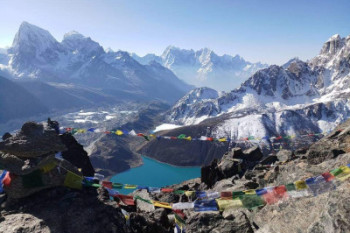
17 days | 16 nights
$ USD 1550
Everest Base Camp through Gokyo Lake
Embark on the iconic Everest Basecamp trek, experiencing the must-do adventure that captivates thousands annually....
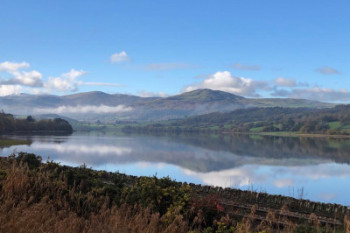
19 days | 18 nights
$ USD 1650
Annapurna Circuit Trek
Experience the allure of one of the world's iconic long-distance trekking trails, renowned for its breathtaking...
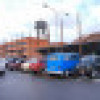
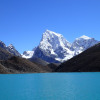
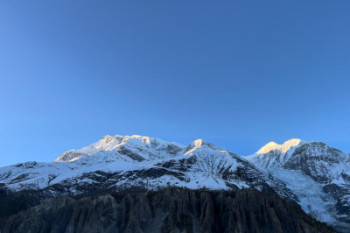
We were group of five people in the tour of four best tour destinations of Nepal under the guidance of Mr. Suresh in January 2024. The trip was beyond any explanations as we started with our day with kathmandu sightseeing which was so fascinating culturally, spiritually and it was so lively. The amount of insights suresh delivered to us was amazing regarding buddhism and its core aspects, how hinduism and buddhism coexisting in the valley since many centuries, iconography as well architecture and their explanations were just beyond our expectations. Second day we indulged in traditional ethnic settlements in chitwan while enjoying jungle safari along with adventurous elephant ride, any nature lover would love that. Lumbini was another center of spirituality where We felt presence of great soul 'Buddha' where we got a chance to get enlightening stories about buddha, his life and his teachings, the moment was incredibly emotional as we strolled through terrain where Buddha had his initial foot. Our final stop was Pokhara, hailed as a natural marvel, and indeed it lived up to its reputation. It was a genuine wonder, with its natural beauty showcased by the majestic Himalayas nearby and the crystal-clear reflection of the fishtail peak in Phewa Lake. The caves, waterfalls, viewpoints, and the warmth of the locals all contributed to leaving us utterly enchanted and blissful. Overall, the trip was the best ever, I strongly recommend Suresh and his team for their personalized service and organized attitude throughout the trip. I have promised them I am gonna come back soon as once was never enough in Nepal and with its people.
Show more...